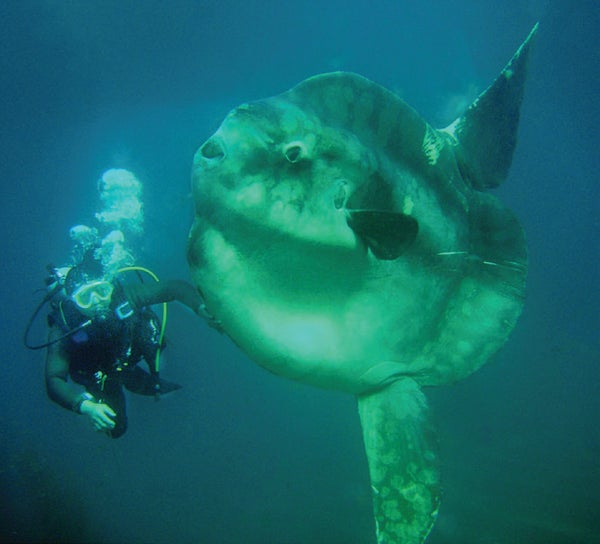Scientists have long thought the ocean sunfish (Mola mola) was the largest of the bony fishes, a group of animals with skeletons made of bone instead of cartilage. It turns out they were wrong. A research team reported in January in Ichthyological Research that the biggest is, in fact, the bump-head sunfish (Mola alexandrini), specimens of which had previously been misidentified as M. mola.
Etsuro Sawai, a biologist at Hiroshima University in Japan, led the group that reexamined hundreds of sunfish specimens and scientific records from around the world. Bump-head sunfish, distinguishable by small lumps on the head and chin, can grow up to 10 feet (three meters) long and weigh more than 5,000 pounds (2,300 kilograms).
The study suggests there may be “many more such instances of misidentification of animal species”—especially considering that the sunfish is relatively large and hard to miss—says Byrappa Venkatesh, a geneticist at the Institute of Molecular and Cell Biology in Singapore, who was not involved in the new research.
On supporting science journalism
If you're enjoying this article, consider supporting our award-winning journalism by subscribing. By purchasing a subscription you are helping to ensure the future of impactful stories about the discoveries and ideas shaping our world today.
Co-author Marianne Nyegaard, an ichthyologist at Australia's Murdoch University, says this type of clarification is vital in biology and “important in understanding, for example, the ecological consequences of climate change.” Temperature changes could shift the known ranges of different species that previously were not correctly distinguished.
